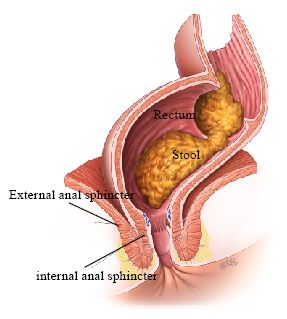Pelvic floor muscle training in combination with information and fibre supplements is recommended as first line treatment for faecal incontinence.
Pelvic floor retraining for faecal incontinence.
As you relax and contract your pelvic floor muscles a monitor will measure and display your pelvic floor activity.
In a biofeedback session your doctor or other health care provider inserts a small probe into your rectum.
People who have fecal incontinence pelvic floor muscle training exercises can help strengthen the muscles under the uterus bladder and bowel large intestine.
Sometimes a technique called biofeedback may be used with pelvic floor exercises.
Pelvic floor muscle training for prevention and treatment of urinary and faecal incontinence in antenatal and postnatal women targeting continent antenatal women early in pregnancy and offering a structured pfmt programme may prevent the onset of urinary incontinence in late pregnancy and postpartum.
This is an update of a cochrane review previously published in 2017.
About one third of women have urinary incontinence ui and up to one tenth have faecal incontinence fi after childbirth.
These exercises could help improve the strength of the sphincter and pelvic floor muscles and improve bowel control.
They can help both men and women who have problems with urine leakage or bowel control.
Pelvic floor muscle training pfmt is commonly recommended during pregnancy and after birth for both preventing and treating incontinence.
The bladder bowel community website has more about pelvic floor exercises for incontinence.
Research suggests that biofeedback training is more effective in treating fecal incontinence.
You place a small device in your bottom while doing the exercises and it tells you how well you re doing them.
Worsened by loose bowel motions.
To determine the effect of pelvic floor muscle training compared to usual antenatal and postnatal care on incontinence.
Targeted pelvic floor muscle retraining holding on programs and stool manipulation.
The pelvic floor muscles help to control when you pass urine and open your bowels.
Pelvic floor anal sphincter exercises the pelvic floor is a sheet of muscles that extend from your tail bone to your pubic bone at the front forming a platform between your legs.
Weakness in the external anal sphincter pelvic floor muscles.
Urge faecal incontinence bowel leakage in association with an urge to defecate despite trying to hold onto the motion.
Despite this the effect of pelvic floor muscle training for faecal incontinence is unclear.
Pelvic floor muscle training is commonly recommended during pregnancy and after birth both for prevention and the treatment of incontinence.










